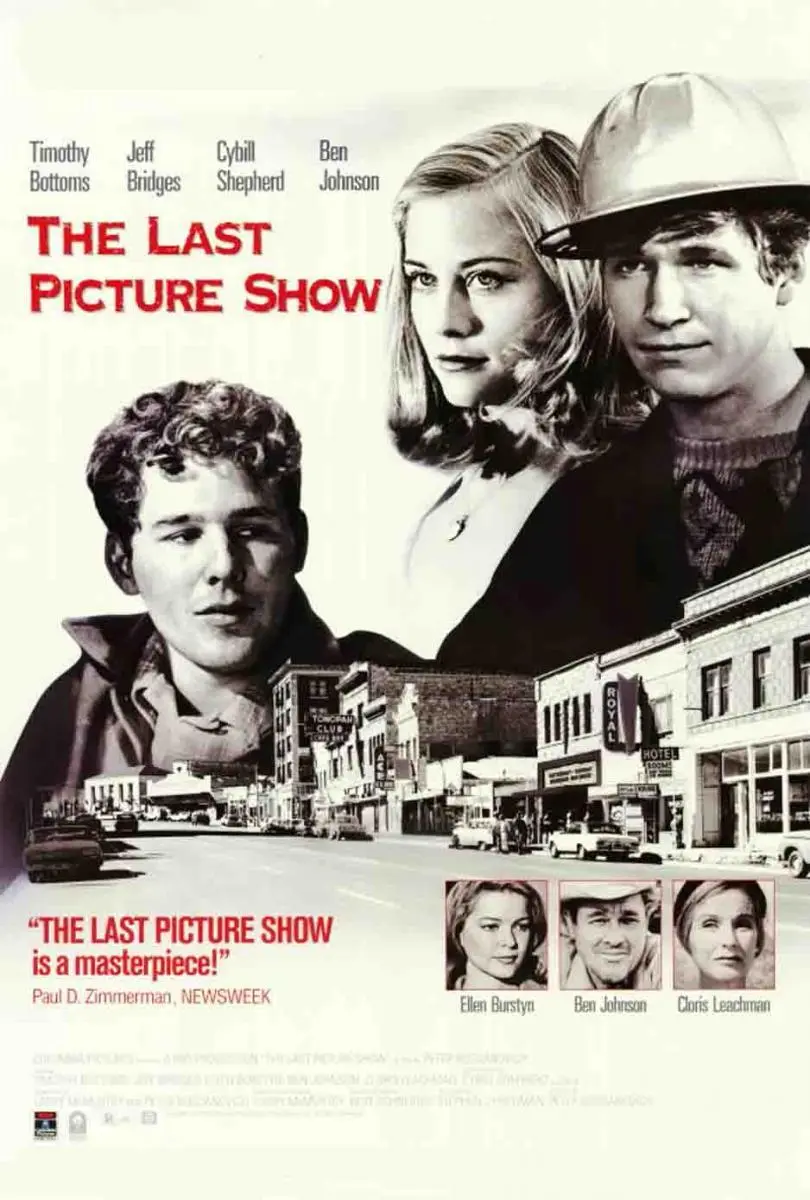
The first thing that you will notice about Peter Bogdanovich’s class movie The Last Picture Show is that although it’s a movie made in 1971, Bogdanovich still chose to shoot the film in black and white. 52 years later, this choice has done much to retain the timeless, dream-like quality of the movie. (If you’ve ever seen the colorized version of Casablanca, you’ll know what I mean.)
It’s also a very appropiate choice, because although the movie is essentially a regular, day-to-day glimpse inside the lives of the teenagers of the small town of Anarene, Texas, their lives are so bleek and hopeless that it might as well be in grayscale instead of color.
The 1960s and 1970s were periods of great change within the US, as the great hope and dreams that resulted from the end of World War II and the new technologies that vastly improved everyone’s lives were replaced with civil rights protests, psychedelic countercultures, repeated failures in the Korean and Vietnam wars, and the feeling that life really wasn’t getting better every year anymore. Although we succeeded in sending Neil Armstrong to walk on the moon, we also went through the Cuban Missile Crisis, the John F. Kennedy assassination, Nixon’s Watergate, and many other events that repeatedly shook the foundations upon which American superiority were built.
Hollywood was no exception to the changes in society. The 1948 United States v. Paramount Pictures ruling ended the era where theater chains were also owned by the very film studios which made movies to show in those theaters, and the old studio system was on the way out. Technology continued to improve, but public perception of movies had changed to the point where people went to movies less and less, as the general audience didn’t really care for rehashes of The Sound of Music every year anymore.
It was apparent that the old ways of doing things were no longer making money, and Hollywood, more so than many other industries, was all about the money. The studios started taking risks in allowing younger, more non-traditional filmmakers to control the reins, and thus began the era of Martin Scorsese, Francis Ford Coppola, Stephen Spielberg, and George Lucas among many others.
The Last Picture Show showed the real life struggles of how things actually were. The people in Anarene were severely limited in what they could do in life. The beginning of the film quickly establishes that the people of the town really had nothing else to talk about besides how pitiful their local high school football team was. When Sam the Lion banned the boys from his properties - the diner, pool hall, and theater - he essentially took away everything that made their lives worth living. Pretty much everyone knows everything about everyone else, and characters repeatedly do something, anything to capture the fleeting joy of having something new happen to them, whether it’s trying to get into each other’s pants, escaping to the big city to have a naked pool party with a rich boy, or even a spur-of-the-moment weekend trip to Mexico.
The loneliness and emptiness of the town is emphasized in the long moments where nothing really happens. In the modern era, we’re used to JJ Abrams-type lens flare quick cuts and Jason Bourne action sequences, but Bogdanovich has no problem just letting the camera linger on as Jacy slowly removes her clothing or Ruth and Sonny slowly bumble into bed. There’s no quick fix, no excitement, no instant gratification all prevalent in the TikTok era. It’s just normal, boring life presented exactly as it really is.
And sometimes, that’s all it takes to make a great, meaningful movie.
About the Author |
|

|
Jim has been an amateur media critic since the early 90s, and was a proud member of the drama club during both high school and college. In his spare time, he constantly searches for interesting esoteric media to consume from every country in the world. |